
Club 3D Rolls Out its First PSU Lineup
Club 3D, known more for its graphics cards, rolled out its first lineup of PSUs, ranged from a 400W entry level non-modular model to a 1000W high-end modular one, with 600W non-modular, 700W and 850W modular models along the way. The 1000W CSP-X1000CB, to begin with, uses a 4-rail +12V circuit with 38A per rail, it boasts of 80 Plus Bronze efficiency rating. Connectors include (apart from the 24-pin ATX and 4+4-pin EPS(CPU)): two fixed + four modular PCI-E 6+2 pin; one modular 4+4-pin EPS(CPU); three fixed + six modular SATA power; two fixed + five modular Molex; one fixed + one modular Floppy. This PSU has a blue colored 120 mm temperature-controlled fan. Next is the 850W CSP-D850CB, this 80 Plus Bronze certified PSU also uses a four-rail +12V design, but with 34A rails. Connectors are the same the 1000W model, except for: two fixed + two modular PCI-E 6+2 pin. This one, along with the 750W model has a green-colored fan.
Speaking of the 750W CSP-D700CB, this 80 Plus Bronze certified model uses a four-rail +12V circuit with 32A rails. Its connector configuration is different from the 850W model: apart from the 24-pin ATX and 4+4-pin EPS(CPU), only three SATA connectors are fixed. Rest are modular, which include: six SATA power; two PCI-E 6+2 pin; two PCI-E 6 pin; five Molex; one 4+4 pin EPS(CPU); and a Floppy power. Next up, are the totally non-modular value models. The 600W CSP-S600 sports two PCI-E 6+2 pin; six SATA; five Molex; and one Floppy; while the cheapest 400W CSP-S400 gives you just one PCI-E 6+2 pin; four SATA; 3 Molex. The 600W and 400W models are just 80 Plus rated, and feature a yellow-colored fan. Club 3D did not give out any pricing details.
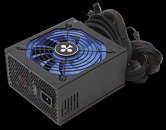


Read More ...
(PR) HP Advances the Touch Experience for Consumers and Businesses
Introducing a more personal, intuitive and entertaining computing experience for consumers, HP today unveiled the sleekly appealing HP TouchSmart310 PC, which features the most advanced version of the company's exclusive TouchSmart software to date. The company also announced the HP TouchSmart Apps Center for one-touch access to free and subscription-based applications, as well as the HP Omni100, which offers the performance users demand from a tower and monitor in an all-in- one design.
HP also is helping businesses make touch an integral part of the customer experience through relationships with American Airlines, ESPN and the National Football League's San Francisco 49ers. "Each generation of TouchSmart is a reflection of what HP has learned from its customers, complemented by the latest technologies," said James Mouton, senior vice president, Desktop Organization, Personal Systems Group, HP. "The TouchSmart PC's unique interface lets users do more than just basic computing – it acts as the anchor of one's digital lifestyle, encouraging creativity, organization and a truly immersive experience."



Read More ...
(PR) Tt eSports Announces the Shock USB Gaming Headset
With headsets rapidly becoming the standard accessory in eSports ie. Shooting games (FPS), role playing games (MMORPG) and real-time strategy games (RTS) – consumers will be looking to Tt eSPORTS for the most extreme gaming gears. Headsets equipped with a microphone can open up a whole new world of multiplayer gaming. The ability to taunt your enemies and strategize with your teammates all becomes possible as Tt eSPORTS unveils its newest product the SHOCK headset. Unlike many headsets out on the market, the Shock headset covers the ear entirely. This attention to detail makes a very big difference when it comes to comfort and noise cancellation giving players the satisfaction of knowing that Tt eSPORTS designs with their consumers in mind.

Read More ...
ASUS Finally Releases ROG Crosshair IV Extreme Motherboard
When we first saw the ASUS ROG Crosshair IV Extreme back in March, it seemed like just a beefier version of the Crosshair IV Formula with four well spaced out PCI-E x16 expansion slots, a stronger VRM, and a few more ASUS-exclusive goodies thrown in. Later in May, we learned that the Crosshair IV Extreme is different from its smaller, more popular sibling, in featuring the LucidLogix Hydra Engine chip that lets the users pair graphics cards across the lineups and GPU vendors, whichever way they want to upscale performance or add features. After quite some wait which led some of us to fear that ASUS shelved the product as Crosshair IV Formula seems to have been well received, the company surprised us by finally releasing the beast to the market.
The Crosshair IV Extreme that we see today is slightly different from the older iterations in featuring a different heatsink assembly design. It features bulkier, more groovy-looking heatsinks over the north-west cluster that houses the CPU VRM and AMD 890FX IOMMU, while the south-east cluster has a sleeker heatsink that cools the Lucid Hydra chip and the AMD SB850 southbridge. Most other features remain the same: expansion slots that include five PCI-E x16, one PCI; support for dual-channel DDR3-2000 MHz memory; a six-port SATA 6 Gb/s RAID controller, 2 SATA 3 Gb/s ports, two eSATA 3 Gb/s; connectivity that includes gigabit Ethernet, Bluetooth, 8-channel SupremeFX X-Fi audio, USB 3.0; and a boat-load of OC-friendly features including ROG Connect, redundant BIOS, on-board voltage-measure, PCI-E gating and OC controls, etc. It is priced around 300 EUR.
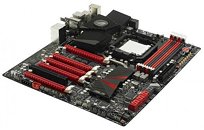
Source: TechConnect Magazine
Read More ...
Gainward GTS 450 GOOD Low-Profile Card Pictured, Taken Apart
Palit's subsidiary Gainward has a low-profile GeForce GTS 450 graphics card in the making, much like Palit's card. Both these are yet to ship to major markets. In the mean time, Korean website Brainbox.com did a picture preview of Gainward's card, called GTS 450 GOOD Low-Profile. The pictures reveal a neatly-designed PCB and cooler assembly modeled along the lines of high-end graphics cards in which hot air is directed right out of the case. The assembly includes a blower, a shroud that directs air-flow, a large heatsink with densely packed aluminum fins that channel air through, and a heatsink over the MOSFETs.
The PCB seats the GF106 GPU right in the middle. While it looks long, it's only because the PCB is half-height to give that illusion. In reality the PCB is 7.4" long, not longer than the full-height NVIDIA reference PCB, and should fit in most SFF cases that have two expansion slots. The PCB uses a simple 4-phase VRM driven by an ON-Semi controller, there are four GDDR5 memory chips on either sides of the PCB, totaling 1 GB. The clock speeds stick to NVIDIA reference: 783/1566/900(3600) MHz, display outputs include and are limited to one DVI and an HDMI. Power is drawn in from one 6-pin PCI-E power connector facing downwards à la Radeon HD 4870 X2. Gainward's card may charge a slight premium over the full-height cards, for the convenience it offers. More pictures at the source.
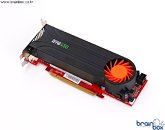
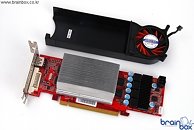
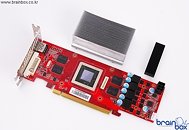
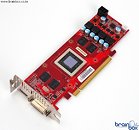
Source: BrainBox.co.kr
Read More ...
Intel Gives Core i3 and Core i5 Dual-Core Processors K0 Stepping Update
Intel is giving some existing 32 nm "Clarkdale" based Core i3 and Core i5 processors an update. The processors will transition to the new K0 stepping from the existing C2 stepping. The parts that will be made on the K0 silicon are Core i3 models 530 (new sSPEC: SLBX7), 540 (new sSPEC: SLBTD) and Core i5 models 650 (new sSPEC: SLBTJ), 660/661 (SLBTK/SLBTB), 670 (SLBTL). Newer and upcoming models such as the i3-550, i3-560, i5-665K, and i5-680 are already being built on the K0 stepping die. Motherboards will require a BIOS update to support the new K0 stepping processors.
The K0 stepping change includes the following highlights:
- New S-spec and MM numbers for the converting products
- Extended CPUID will change from 0x00020652 to 0x00020655
- Host RevID will change from 0x12 to 0x18
- K0 stepping package is pin compatible with C2 stepping package
- Adds Processor Context ID (PCID) support
Read More ...
Intel Wants $50 for Software Unlock of CPU Features
The Pentium G6951 dual-core LGA1156 processor may not have made any headlines when it was known to be almost identical to the Pentium G6950, until now. Intel designed the G6951 to support "hardware feature upgrades" by purchasing them and enabling them using a software, so users with this processor installed can upgrade their systems by enabling that are otherwise locked for the SKU. The $50 upgrade fetches support for HyperThreading Technology, enabling four threads on the processor; and unlocks the disabled 1 MB of the L3 cache (Clarkdale has 4 MB of L3 cache, of which 1 MB is disabled on the Pentium SKUs).
There isn't much value in buying a $99 Pentium G6951 and the $50 Upgrade Card upfront, but later down the line, companies can opt to mass-upgrade system performance without touching any of the hardware inside. The service works by the purchase of an upgrade key that the user has to feed into the software, which is then verified by Intel's activation server, following successful verification, the software unlocks the processor's features. This is a one-time process, portable between software reinstallations.
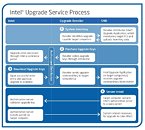
Read More ...
(PR) Addonics Announces the Compact RAID 2.5'' Drive RAID eSATA Enclosure
Addonics Technologies, announced a very small storage appliance which, despite being the size of a four inch cube, packs the power and features of RAID storage devices that are much larger and up to three times as expensive. Called the Compact RAID, the unit accommodates up to five 2.5", 9.5 mm height hard drives or SSDs to form high performance storage configurable to various RAID levels up to RAID 5. Drives can easily be removed or added to the Compact RAID, much like a tape cartridge without special tools.
In addition to the powerful RAID engine, the Compact RAID comes built-in with a high speed eSATA connection and can deliver a screaming throughput up to 300 Mbytes/sec. The Compact RAID weighs just over a pound without drive. It also features a silent operation and the ability to be used as a boot drive or as additional storage.

Read More ...

No comments:
Post a Comment